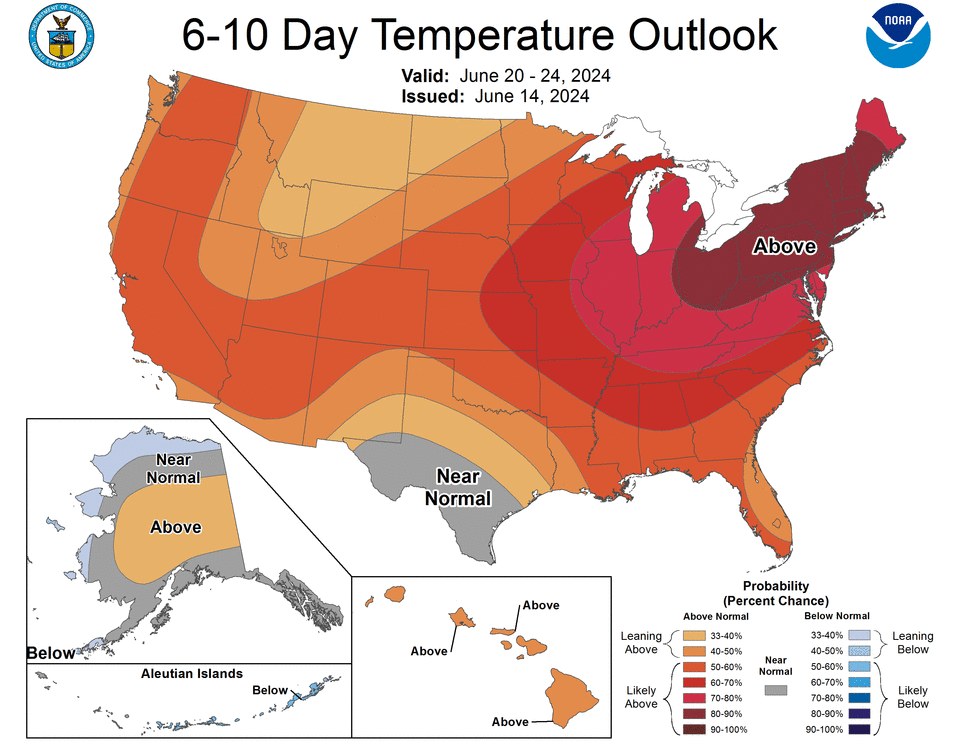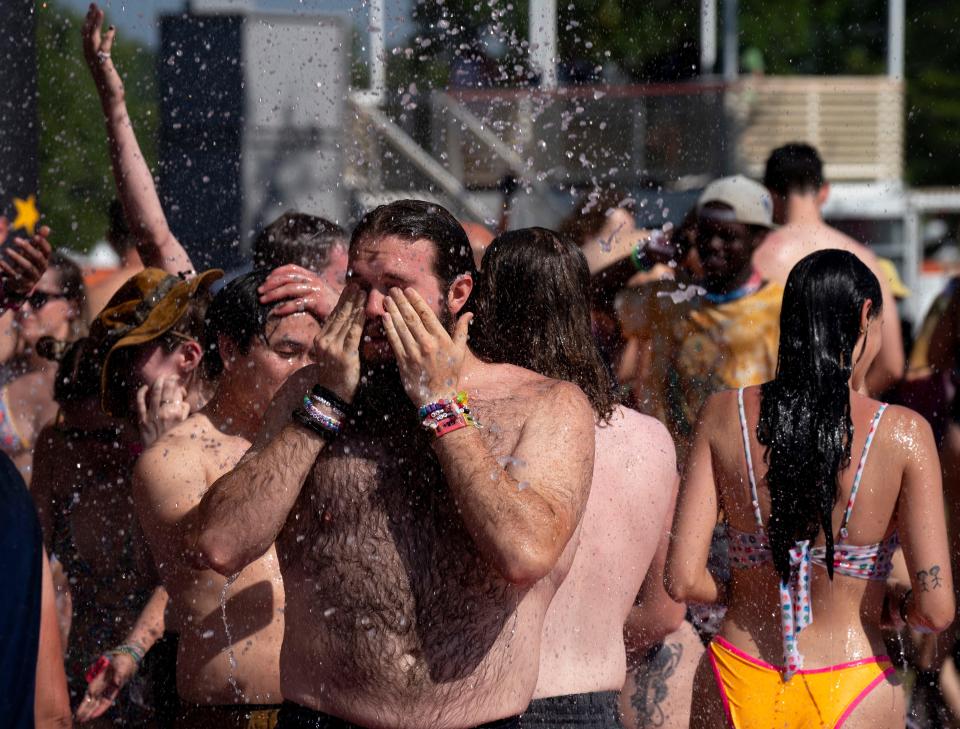Father's Day weekend will be hot in much of the US. Then comes a dangerous heat wave.
Father's Day weekend started Saturday with warm temperatures across much of the country – and forecasters say it's only going to get worse.
In the Southwest, Gulf Coast, Southeast and Midwest, the heat has already arrived with temperatures in the nineties or higher expected by federal forecasters on Father's Day in parts of California, Texas, Tennessee, Kansas, South Carolina and other states.
Next up: Searing heat in the Northeast. Over 135 million people from Chicago to New York should brace for high temperatures next week, AccuWeather meteorologists said.

By that point, much of the nation will face unseasonably warm temperatures, according to an outlook from the federal Center for Weather and Climate Prediction. Forecasters expect above-average temperatures in parts of every state between June 20-24 – with the most abnormally warm weather being concentrated in the Northeast.
Heat preparedness: Massive heat wave heading for USA next week. Cities have been preparing for this.
Summer already started (kind of)
Officials have warned people to look for signs of heat-related illness before the summer solstice on June 20. But from a meteorologist's perspective, summer has already started, Andy Chiuppi, a senior meteorologist for the National Weather Service Memphis office, said.
Along the Mississippi River, Memphis is expected to see temperatures reach 95 on Saturday – 5 degrees above normal at this time of year – with creeping humidity that places the heat index at above 100 degrees. Father’s Day could be hotter, teetering on heat advisories if the heat index surpasses 105, Chiuppi added.
“We know it's really the first hot weekend of 2024 for us,” Chiuppi told USA TODAY. “We're just pushing out all the safety information: people make sure they're staying hydrated. Even if you're not going outdoors, make sure you're drinking enough water and fluids.”
What to avoid with heat
Tennessee health officials warned residents to take precautions while in the sun. People should avoid being outside at the hottest time of day, a state health department post said. Chiuppi added people shouldn't leave children or pets inside cars. The Centers for Disease Control and Prevention also recommends taking breaks when possible and staying in the shade as much as possible.

“When combined with warm overnight lows, major heat risk could affect anyone without effective cooling and/or adequate hydration,” the NWS national forecast said Saturday. “Be sure to remain weather aware and follow proper heat safety!”
Mental health: Farmers have a high suicide rate. Therapists struggle to connect with them.
Before next week's heat wave, New York City officials said this weekend's weather is relatively cool, in the 70s. Now is the time to install an air conditioner or locate the nearest cooling center, an Office of Emergency Management social media post said.
“Great time to prepare & make a plan for next week’s high heat which could last through next weekend!” the post said.
How to prepare, check in
People should know the signs of heat illness such as heat stroke and heat exhaustion.
Extreme heat kills and maims: Here are some of its victims from across the US.
People at greatest risk are young children, elderly people, outdoor workers and those who have chronic diseases, mental illness or take certain medications that make it difficult to regulate their body temperatures, the CDC said. Additionally, those who may not have access to reliable AC are at risk, as are others who live in areas called urban heat islands that are warmer due to more pavement and buildings — and less green space.
Experts previously told USA TODAY it's best to check in on those who may be vulnerable with heat.
This article originally appeared on USA TODAY: Dangerous heat wave in US forecast as 90+ degree temps spread


